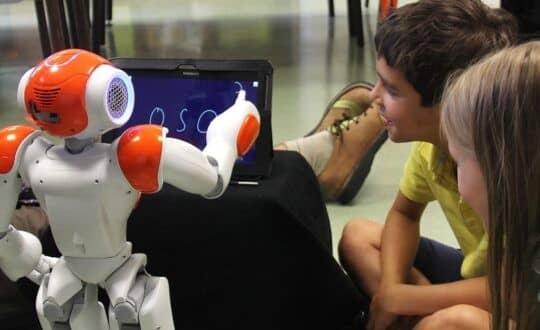In an era where technology seamlessly integrates into our daily lives, the influence of robotics in education represents a transformative shift towards interactive and future-focused learning environments. Robotics, as a facet of educational technology, is not merely a tool but a bridge to developing the essential skills needed in the digital age. This integration offers unique opportunities for students to engage with material in hands-on, innovative ways that traditional educational models cannot provide.
Importance of Robotics in Education
The importance of incorporating robotics into educational curricula cannot be overstated. As we advance technologically, the demand for proficiency in STEM (Science, Technology, Engineering, and Mathematics) fields continues to grow. Robotics introduces students to the foundational concepts of mechanical engineering, computer programming, and digital literacy—skills critical for the next generation of workers. More than ever, educational institutions are recognizing the need to adapt to these trends, ensuring students are well-prepared and well-versed in these areas from an early age.
Benefits of Robotics in Education
Engaging with robotics offers students a plethora of benefits that extend beyond the classroom. Firstly, robotics encourages critical thinking and problem-solving skills. Students learn to experiment, troubleshoot, and refine their designs, which fosters a growth mindset and resilience. Secondly, robotics enhances creativity, as students are tasked with designing solutions to complex problems. This creative engagement is crucial in maintaining student interest and involvement.
For students with disabilities, robotics can be especially impactful. Customizable robotics kits and software allow for tailored educational experiences that cater to varied learning needs and abilities, promoting inclusivity. Such tools can offer alternative methods for engagement and interaction, which are often more adaptable than traditional learning aids.
Case Studies:
Robotics in Educational and Rehabilitation Complexes
Across the globe, educational and rehabilitation centers have successfully integrated robotics into their programs, with remarkable outcomes. For instance, a special education center in California has utilized robotics to assist children with autism. The program uses robots to teach communication and social interaction skills, providing a controlled environment where students can practice and learn at their own pace.
Another case is a vocational school in Germany that incorporates advanced robotics into its curriculum to prepare students for careers in manufacturing and engineering. The hands-on experience with real-world applications has significantly increased student interest in technical career paths, demonstrating the practical benefits of robotics in education.
Preparing for the Future
By integrating robotics into education, we are preparing students not just for any future, but for a highly technological one. The exposure to robotics at an early stage helps demystify technology and cultivates an ease with digital tools that are becoming indispensable in the modern workplace. Furthermore, it opens up pathways to emerging careers in AI, machine learning, and automation, areas that are expected to dominate the job market as technology continues to evolve.
Challenges and Considerations
Despite these benefits, the integration of robotics in education comes with its set of challenges. One of the primary concerns is the cost of equipment and software, which can be prohibitive for underfunded schools. Additionally, there is a significant need for teacher training in robotics to effectively incorporate these tools into the classroom. Schools must also consider the balance between traditional learning and the use of new technologies to ensure that educational outcomes are maximized.
Conclusion
The role of robotics in modern education is crucial as we move towards an increasingly digital future. By embracing robotics, educational institutions are not only enhancing learning experiences but are also equipping students with the skills necessary for success in the 21st century. As this technology continues to evolve, it will undoubtedly play a pivotal role in shaping the educational landscapes of tomorrow. Embracing this change is not just an option but a necessity for preparing the next generation of innovators, thinkers, and leaders.




